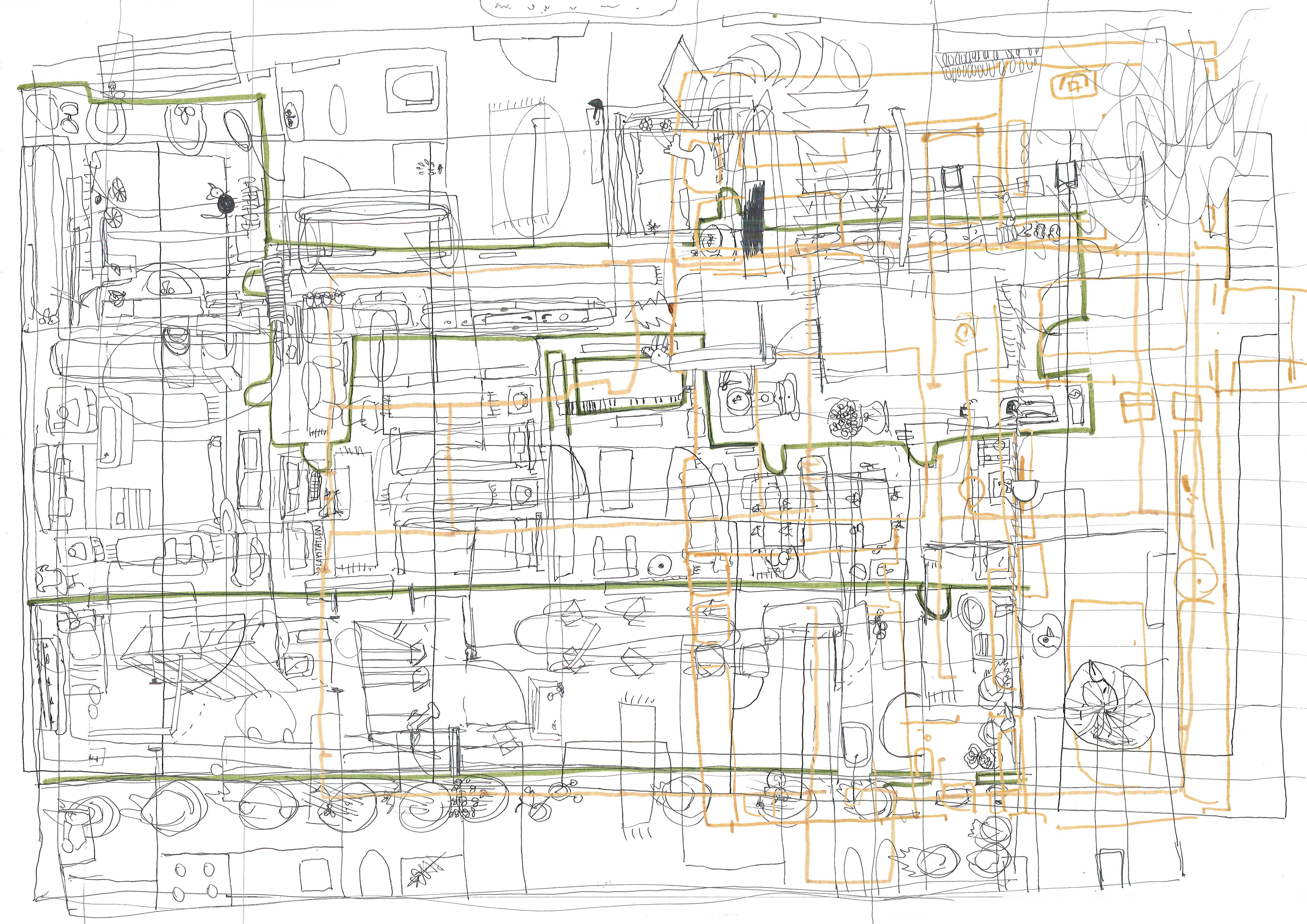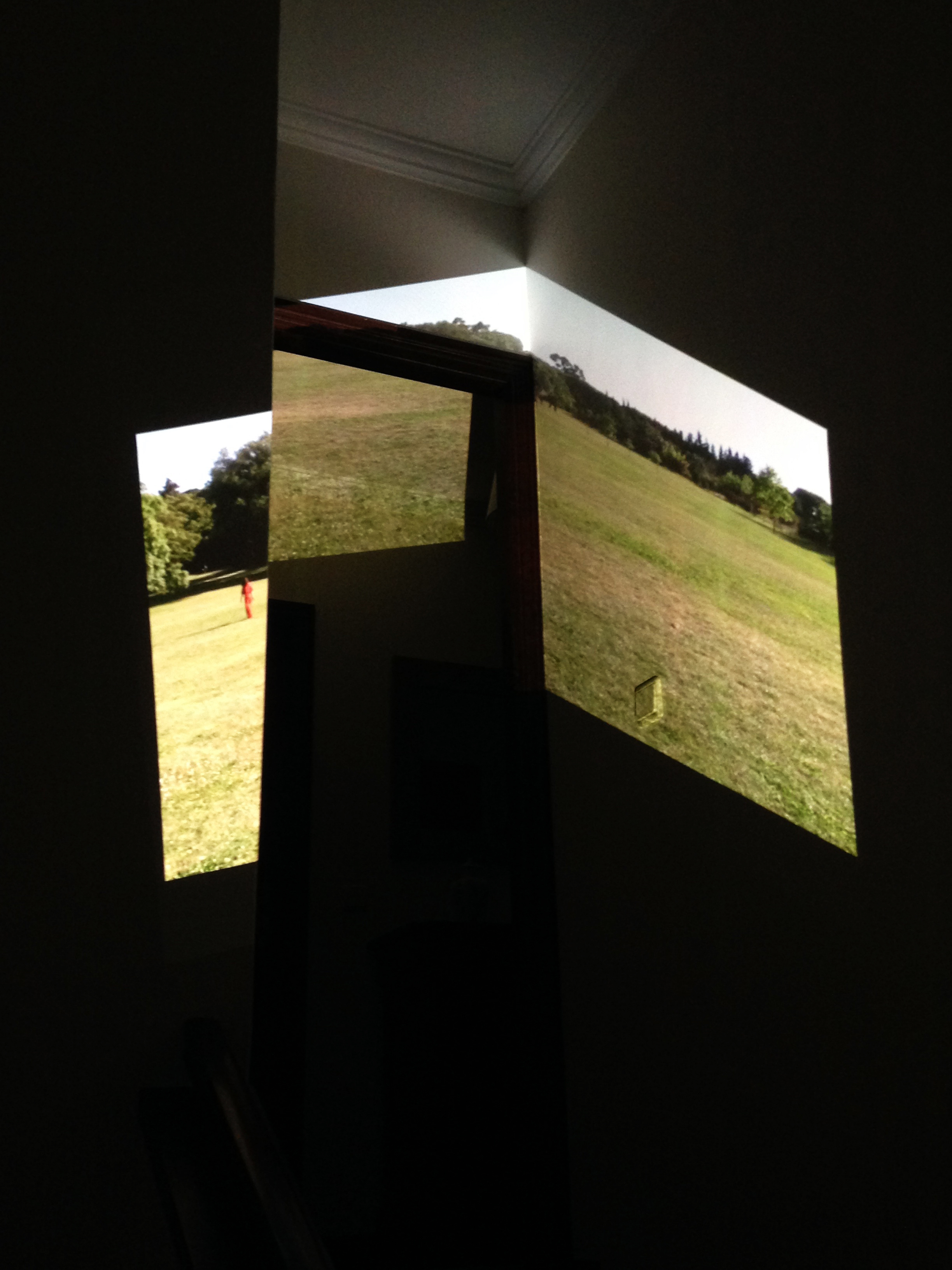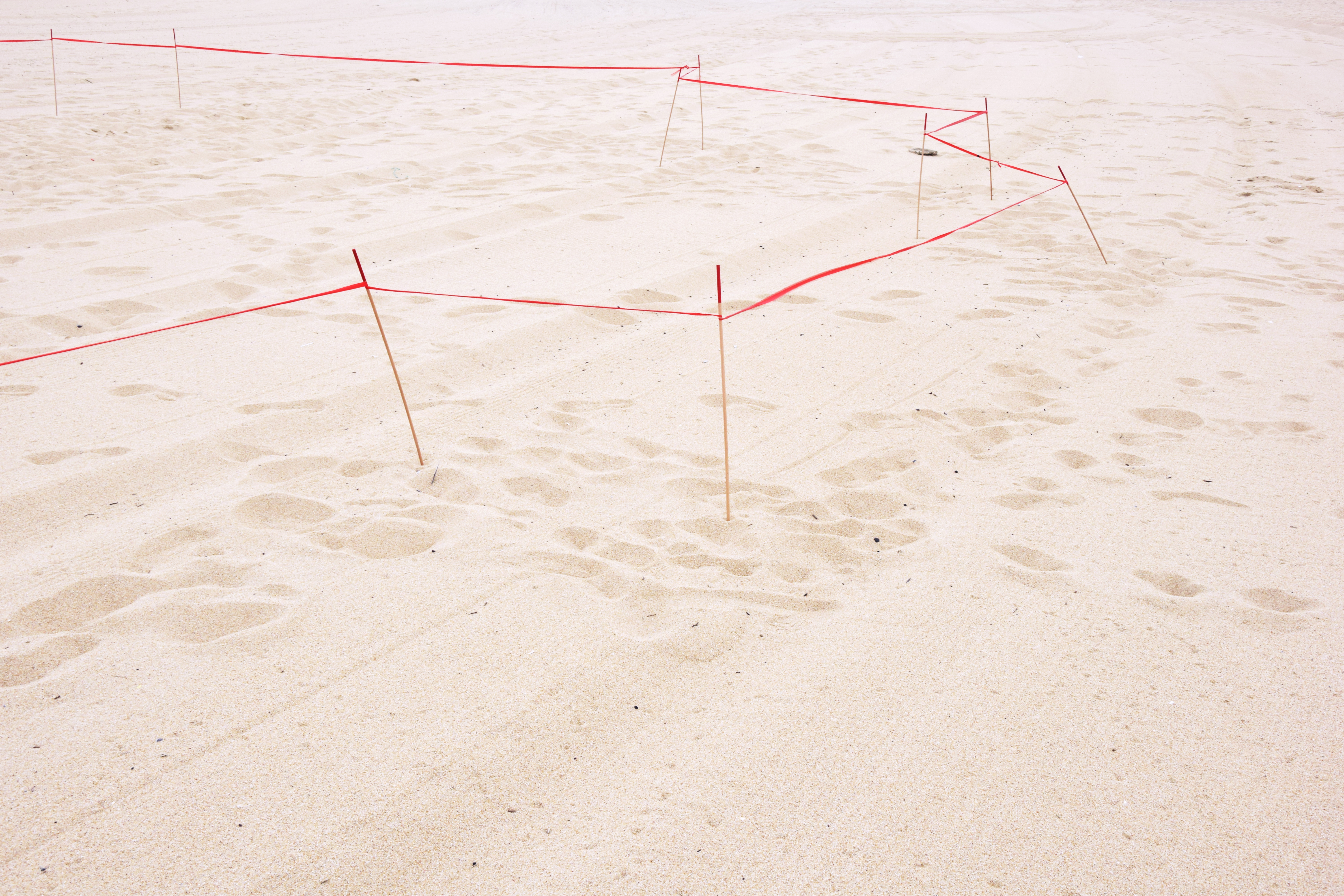welcome ︎
welcome ︎
welcome ︎
welcome ︎
welcome ︎
welcome ︎
welcome ︎ welcome ︎
welcome ︎
welcome ︎
welcome ︎
welcome ︎
welcome ︎
welcome ︎

Construir habitando (2018-)
[trans.To build by living]Installation, three-channel video, drawing, performance, participatory art
This work has been developed around the relationship of memory and body with the space of the house. Over time, it seeks to gather experiences from an expanding group of people and is divided into three research exercises:
1. Drawing limits from memory
In the first stage, each participant made a freehand representation of their first house, while narrating how they remembered to use the space. These drawings are a product of both the architectural space and the lived space. When all the floor plans are layered in the same memory-drawing, another space is created – one that disappears as it grows, becoming illegible and uninhabitable in its multiplicity of paths.


Layering of house plans drawn by memory by participants
2. Walking the drawing
The memory-image experiment is inseparable from the body, as imagining distances requires a memory of walking them. Another exercise is proposed: to walk over the imagined floor plan of the house, trying to make the steps correspond with the real dimensions of the exterior walls.
While walking and projecting the imagined space, houses exist in an exhaustive construction that is never materialized. The drawing would erase itself in the moment of its creation. Only the present moment can be captured, or resorting to memory, only the previous lines of the path can be projected. The place that belongs to us, where we walk in the present, precedes a construction. To draw the lived space is as deceptive as doing so by walking. Even so, participants felt that space was more faithful to the memory, as it was shaped in relation to their bodies, which became a measure.
As part of the process, the participants repeated the walk, this time leaving a trace behind them and revealing their constructions, which were left in the space (image below).

3. Culmination of spaces/ Moving back home
The previous exercise was recorded in video, registering the house drawings walked by the participants. These videos were then installed in one of the childhood houses initially drawn. The projections activated areas of the house where there is usually a void or an obstacle, opening access to another space. The exterior walls delimited by the participants while walking were inscribed on the interior walls. The house was only lit by these projections, turning a space recognized by the steps into one the eyes estranged.




4.
Each walk was recorded in three points of view. In addition to the installation, the videos were mixed into a three-channel video (excerpt below), for other exhibitions. The editing repeats the logic of the drawings, interleaved in the same space, at the same time.
